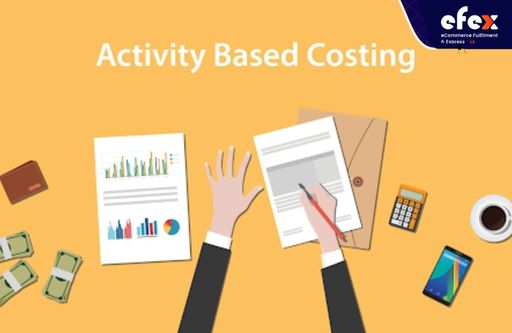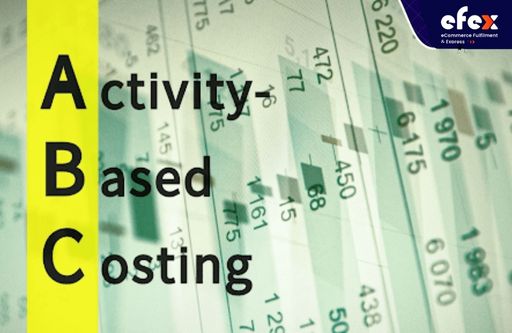
More Helpful Content
Activity-based costing calculation is a method that is being used by many businesses in profit management and capital management. This article will discuss some of the issues related to activity-based costing such as what activity-based costing is with examples or activity-based costing calculation methods.
With the development of the manufacturing industry, many price formulas have been used. One of the formulas widely used by businesses and manufacturers is the indirect costing method based on different products and service lines. This method is seen as a more realistic and effective approach. This method includes the following steps:
Activity-based pricing can be calculated by allocating all indirect costs incurred to the designated cost umbrellas. As a result, the Activity Based Costing formula is
Activity Based Costing = Cost Pool Total / Cost Driver
👉 Read More: Procurement Process Flow: Effective Flow And Benefit

The activity-based costing formula is as follows:
Total cost of the cost pool / Cost driver = Activity-based costing
The processes for computing activity-based costing for a product are as follows:
To begin with activity-based costing, you need to identify the activities involved in producing a particular product. In the meantime, you should also consider a number of factors such as the cost of using the manufacturing facility, the time and cost of any preliminary research.
Divide required activities into cost groups. A cost group is defined as a group of costs that are related to specific activities, such as purchasing or purchasing. You should separate each activity and categorize them into their respective cost groups, which are divided based on their purpose or objectives in the production process.
You can adjust the cost of activities after you have organized them into groups. Cost drivers will be those that influence issues such as hours, costs, units or parts involved in the manufacturing process. For example, the cost of a product will be affected by the purchasing power of this product, or the cost of a product will also affect the quantity of the product produced.
To get the full cost control ratio, you need to first divide the total cost of each cost group by the total control cost. Next, you will determine parameters such as hours, parts or units required for each operation and multiply that by the control cost ratio.
You'll have a clear view of the entire expenses involved with manufacturing once you've computed activity-based costs. You may use this data to make educated judgments about the modifications that are required to enhance the bottom line of your product and your organization.
👉 Read More: Seasonality Index: Formula And Calculation

Company A is a manufacturing enterprise interested in setting up new production equipment to serve during its operations. Currently, they have 250 branches and are considering installing a new piece of equipment for each branch.
In the company's current production cost group, only the equipment part is involved. Its current estimated cost is $300,000. Due to the increase in the cost and working time of the business, the company decided to use the ABC system to calculate the cost based on the activities in the business to come up with a more suitable operating strategy for the future.
They determined the most important factor driving operating costs during operations was the number of machine setups. From this it can be understood that the driver cost of company A is 300 because that is the number of devices they require to install one machine per branch.
When they entered the variable method into the ABC formula, they found that:
Activity-based cost = 300,000 / 300 => A = 1,000 dollars
SerumFreshh is a cosmetics business and is looking at the full cost of its two products being produced, its mascara and lipstick. Their goal is to create a pricing system to sell their products at a more competitive price in the market. The company's accounting team has applied system A and divided activities directly related to product cost into two groups: import and assembly.
Once the groups have been grouped, they will allow the accountant to identify unique move drivers. For the inbound cost group, the control cost would be the number of items purchased, set them up to have 600 orders, and the estimated cost would be $250,000.
From there, applying formula A to the total purchase cost would be:
Activity-based cost = 250,000 / 600 =>A 420 dollars
They then went on to determine that the driver of the installation cost group was the number of hours installed. For this factor, they estimate it will be 200 hours and they calculate the overall cost will be around $200,000. Then, applying formula ABC, we get:
Activity-based cost = 200,000 / 200 A = 1,000 dollars
Thereby, the total cost of this enterprise's new system of costs is $1,420.
Enterprise X now wants to find and calculate the cost of utilities for a specific time period. Accordingly, the total cost that enterprise X has invested to set up the product is estimated at about $50,000 for the period 2021-2022. Working hours are also a factor in utility costs, and they calculate 3,000 hours per year for 2021-2022.
Applying the ABC formula to calculate the expense ratio, we get:
The expense ratio is determined using the Activity Based Costing formula Activity-based costing = Total cost / Driver of costs Cost Ratio
= 50,000/3.00 = $16.6 per hour worked.
Perhaps the information covered in the article about activity-based costing and some of its examples have helped you understand how to apply this calculation method to the business apparatus. There are many different methods to calculate the cost of an SKU, and an activity-based costing calculator is one of the ways that is being used by many companies because of its simplicity and efficiency. Hope you have a good time with Efex.


